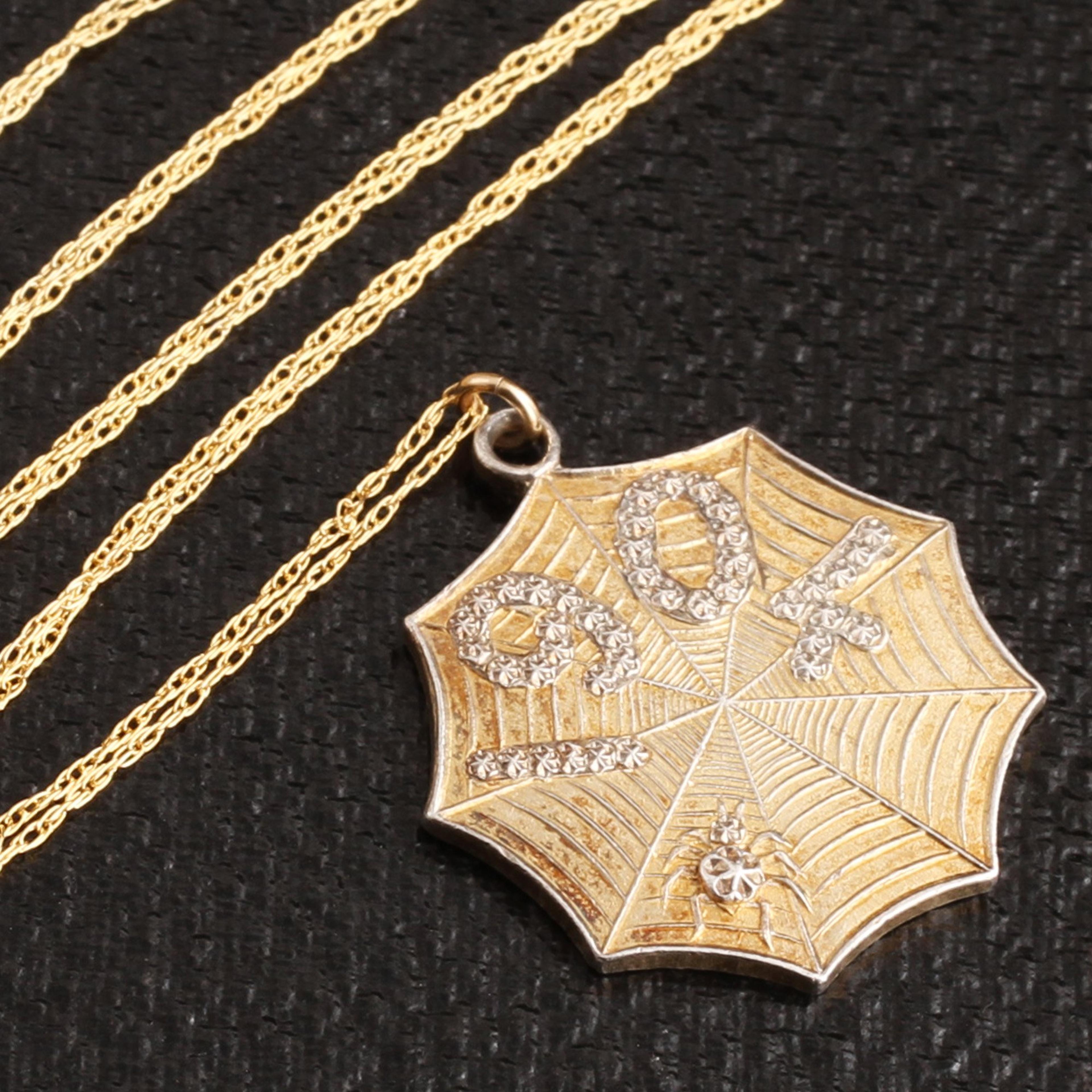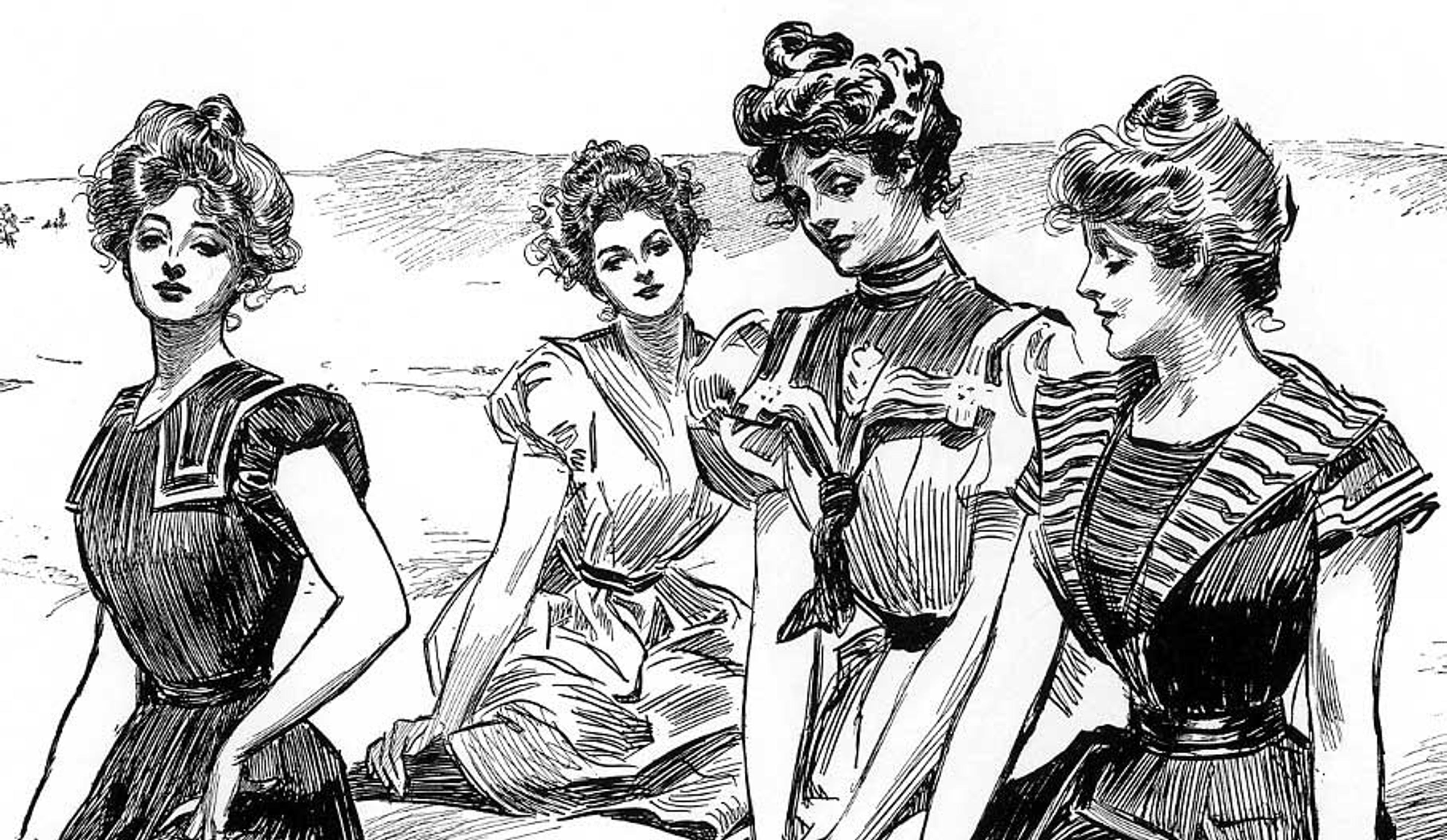An absolutely killer medallion in the shape of a spiderweb, with the year "1904" emblazoned on it in faux-diamond-encrusted font. Look closely - the "stones" are actually an illusion effect created with white metal. Instagram exclusive.
thedetails
- Materials
Gilt sterling silver spiderweb charm, 14k chain.
- Age
Pendant: 1904. The chain is contemporary.
- Condition
Very good.
- Size
1" including the bale, 7/8" diameter. 18" chain.
Need more photos?
Send us an email to request photos of this piece on a model.


Aboutthe
EdwardianEra
1900 — 1910
The jewelry tended toward airy lightness, often in the form of lacy filigree. The world was changing rapidly, but lots of the jewelry still reflected the Victorian ideals of decorum and femininity. Ancient Roman and Greek influences remained popular. “White” jewelry became popular as plentiful deposits of platinum were discovered in Russia and improved smelting technology made it possible for jewelers to work in the noble metal. Platinum was seldom used by jewelers in earlier years owing both to its scarcity and high melting point. The jewelry trade took advantage of its rigid strength to create opulent openwork settings for increasingly brilliant diamonds. The old European cut was perfected, rounder and squatter than old mine. This took stone-cutting one step closer to the mathematically perfect round brilliant cut, which is the most popular diamond cut today. The now-iconic square Asscher cut was patented in 1902. Hot on the heels of platinum, the alloy mixture that produces white gold was formulated and patented in 1915 in New York City. With Europe in the grip of WW1, the American jewelry industry was poised to become a world leader and innovator.
